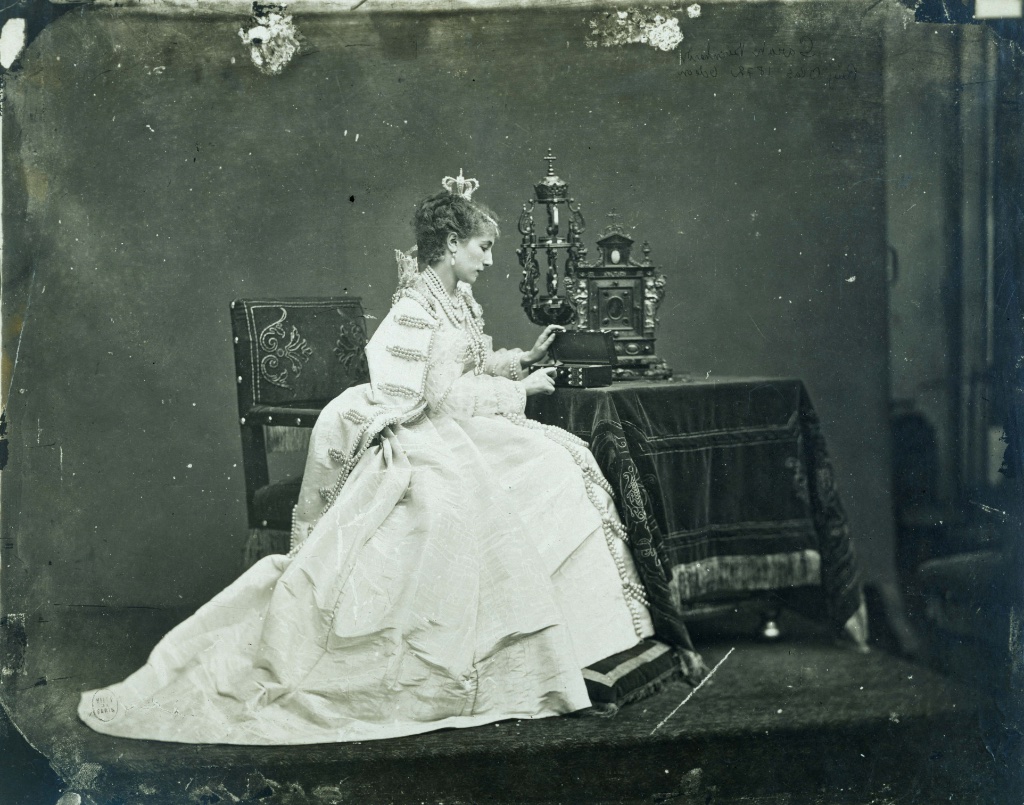
To Jean Cocteau, she was a “sacred monster.” To Victor Hugo, she was “the golden voice.” To her many lovers in the demi-monde of Second Empire and Third Republic Paris, she was a grande horizontale, one of those entrancing, talented and tenacious women who climbed vertiginous social cliffs while reclining seductively in bed.
To theater-loving audiences who flocked to see her on tours that crisscrossed Europe, the Americas, Australia and the South Pacific, she was the brightest star of her age, a flame-haired enchantress.
This summer, the Petit Palais is marking the centenary of her death with an exhibition, “Sarah Bernhardt: Et la Femme Créa la Star.” With 400 artworks and objects, it resurrects the public and private lives and polymath talents of an actress who incarnated the spirit of the Belle Époque.

Born in 1844, Bernhardt won global fame for her mesmerizing presence, emotional range and versatility. She was equally at home with Shakespeare, Edmond Rostand, Victor Hugo or Racine, riveting as Alfred de Musset’s boy minstrel Lorenzaccio, Lady Macbeth, Cleopatra and Pierrot the assassin clown.
The Petit Palais shows her as far more, however: an accomplished sculptor and painter; a hard-driving theater manager and impresario; an entrepreneur who made, lost and remade fortunes; a friend, lover and equal of the most famous and talented figures of artistic and literary society; an engaged activist and hot-tempered rebel; an eccentric extrovert who traveled between engagements in a private train with a menagerie of exotic pets; a sufferer from ill-health and insomnia who kept a coffin in her bedroom and had herself photographed sleeping in it. Memento mori, histrionics or a sharp eye for publicity?

As a publicist, she was a role model for celebrity influencers, marketing her image to advertise anything and everything, from Lu biscuits to face powder to “Terminus: the Absinthe that’s good for you.” But above all, she was the poster girl of Art Nouveau. Alphonse Mucha built his career and hers with his posters for her roles as romantic heroines and cross-dressed heroes.
As if emerging from the posters are costumes to match: the queen’s crown from Victor Hugo’s Ruy Blas, in silvered metal, tulle pearls and strass; Empress Theodora’s Byzantine golden gown, embroidered in silken thread and set with thousands of glass pearls; a jeweled bonnet, attributed to Lalique, in velvet, silver, opals, turquoise and amethysts. For students of stage design, the show offers a masterclass in the costumier’s art.

In an age when “melodrama” was not a pejorative word, Bernhardt did melodrama in spades. In keeping with her bedside coffin, she was famous for her deathbed scenes. Theatergoers loved them, but critics could take her with a pinch of salt. Among the sharper artworks in the show are the caricatures by André Gill. Portraying Bernhardt as a hook-nosed sphinx or wispy-bodied Chimera, the fire-breathing snake-tailed female monster of Greek legend, they bear witness to her reputation for being, for all her success, what might now be called “a difficult woman.”
If she was difficult, her life wasn’t always easy, as the show’s excellent catalog makes clear. Daughter of a Dutch prostitute, father’s identity uncertain, she was bundled off to a country nurse at birth and packed out of the way into a Versailles convent school for young ladies at the age of nine. When she came out at 15 it was to go straight into her mother’s business: pregnant by an aristocratic “admirer” by the age of 19, she was the mother of an illegitimate son two months after her 20th birthday.
When she played La Dame aux Camélias, she knew the part inside out – not just la vie galante but also the tuberculosis, which ran in her family. Her two younger sisters died of it, along with pain-induced drug addiction. Bernhardt herself lost a leg to gangrene when she was 70, almost certainly due in part to skeletal tuberculosis, which didn’t stop her from touring the trenches a year later as a troop entertainer during the long, bloody First World War battle for Verdun.
There was another difficulty, referenced in those red-haired, hook-nosed caricatures. Despite her convent education, she was Jewish on her mother’s side. That made her fair game in a France infected by virulent antisemitism after the 1894 scandal of the Dreyfus affair, when she supported her friend Émile Zola’s campaign against the punishment of a Jewish army officer condemned for spying crimes he did not commit.
In 1914, she was named a Chevalier of the Légion d’Honneur for international services to the French language and for nursing wounded soldiers during the 1870 siege of Paris during the Franco-Prussian War. Even in death, she was again a target for antisemitism when, under the Nazi occupation of Paris in 1940, her theater on the Place du Châtelet was stripped of her name.
Happily, after several permutations since then, what is now the Theâtre de la Ville is getting her name back in September, following the completion of a major makeover.
See our list of Current & Upcoming Exhibitions to find out what else is happening in the Paris art world.
Favorite